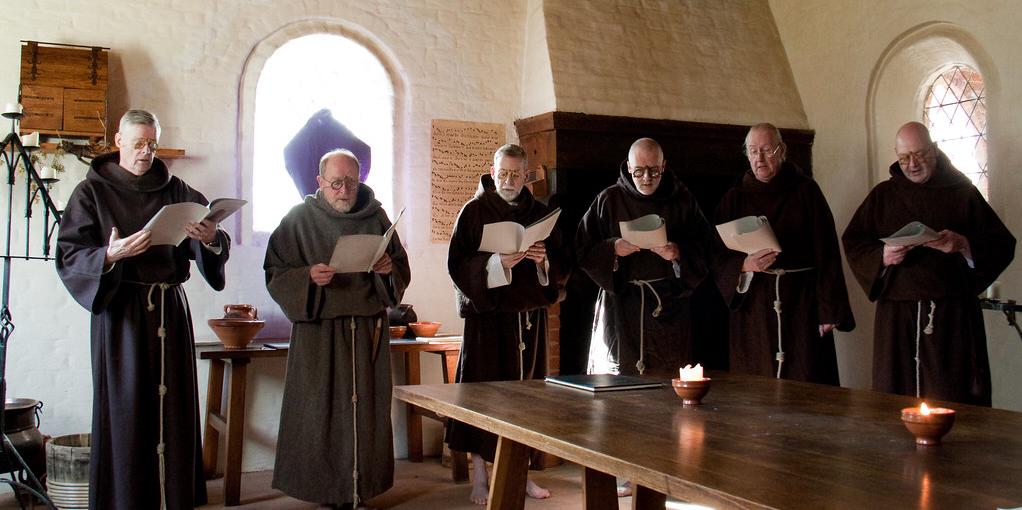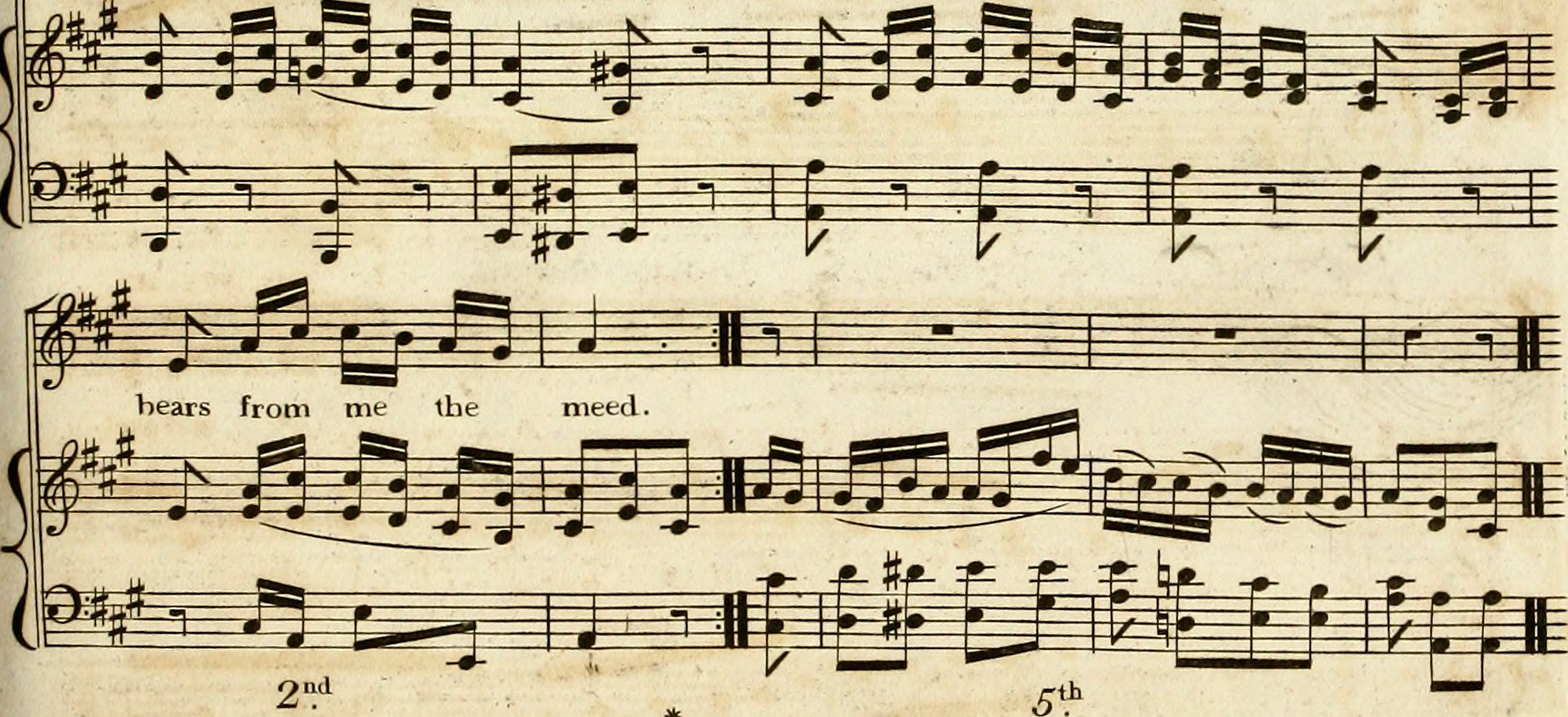This article is about a topic that most of us are aware of but may not know the technical term for. When a vocalist sings different notes over one syllable it is called melisma, it is very easy to identify. One great example of melismatic singing is this scene from the classic sci-fi movie The Fifth Element.
What is the Definition of Melisma?
Normally we sing a note on each syllable, but with melisma, we change those notes. There is no specific amount of change necessary and the notes used also vary. Melisma is also known as a vocal run. Before a few decades ago it was used sparingly, these days it is often abused by singers wanting to show off.
In the scene shown above the blue aliens' vocals are synthesized for a few moments, as that isn’t a normal thing a human can sing. Yes, some vocalists have copied it, but in general, it was meant to be an inhuman singing voice. But make no mistake melisma is a very human activity; even an ancient one!
A Little History
Melisma is the original form of vocal embellishment. It can be found across many cultures and was originally used as a way to induce hypnotic and spiritual type trances. In some people with anxiety or similar coping issues, it is used for a calming effect. It also works great to put a baby back to sleep at 2 AM!
You will find it used in Gregorian chants, Arabic, Jewish, Orthodox Christian, African, Indian ragas, almost any tradition that has a song it will pop up. The genre “world music” is a huge one, but it’s common to find melisma among it.
The two more modern examples are opera and gospel, and most modern music has been inspired by the gospel aspect of melismatic singing. The entire genre of rhythm and blues comes from the use of blue notes sung by African slaves. That vocal run from “regular” notes to lowered 3rd, 5th, and 7th scale degrees is what gives the blues its feel.
In recent times melisma has occasionally been a punchline thanks to shows like American Idol. It was attempted by so many contestants that it basically was frowned upon, if not banned. To this day when melisma comes to mind, one imagines an over-eager vocalist.
Melisma Examples
Many forms of old religious hymns will have melisma. Perhaps one of the more popular may be the carol “Angels We Have Heard on High.” When the Gloria part is sung they stay on the ‘o’ for about 18 notes. When learning melisma (as we will discuss below) this is a great go to piece for those familiar.
One of the best pop examples of the vocal run is by the great Whitney Houston. The song “I Will Always Love You” was written by Dolly Parton. Listen to both and you will see the extra notes Houston uses. Whitney was a clear master of the art of melisma.
But a few years before that hit, Kevin Bacon danced to this song in the movie Footloose. Sung by the soul and R&B singer Deniece Williams. Soul as a genre is heavily focused on vocal harmonies and performance, you’ll find melismatic examples from nearly all singers of that style.
And of course, there is always a Beatles example! Here they use it right at the 2:18 mark with Paul doing it in the classical Indian style. It is even found in other pop stars' songs in different styles like “The Ties That Bind” (at the 0:47 mark). And of course the well-known “Bohemian Rhapsody” has its parts with melisma.
The recent examples of melisma that give it a bad name are the ones inspired by artists like Mariah Carey and Christina Aguilera. And that’s not to say those artists are bad, they are very talented at their melismatic singing. Unfortunately, they inspire far too many untrained vocalists to copy a technique that sounds awful when done wrong.
How to Practice and Use Melisma
In the section above we could have kept going with examples for a very long time. Especially in certain genres like gospel and soul, nearly every song may have an example. But usually, the main thing all melismatic singing has in common is that it really should be used sparingly.
Yes, we have those famous examples of master vocalists going on long vocal runs, but even they know when to tone it down. The more you expand the run, the more it is going to sound silly if not sung right. It goes from a thing of beauty to a comedy routine! And it is not always easy to teach.
Even if a music teacher isn’t perfect at playing all instruments, they know enough about music to show students the right buttons to push and embouchure techniques. Singing is a lot harder to teach and to describe the muscle movements necessary. It truly helps to learn melisma if you have some mimicry talent or a decent natural singing ability.
But that doesn’t mean a complete beginner has no hope. You learn your scales and notes, follow instructional videos, and of course, seek out paid lessons if possible. One of the best ways to teach yourself is to sit in front of a piano and practice your intervals. Again focus on the tension with blue notes as that is where you usually are using melisma.
Luckily your voice is an instrument that requires no band supplies, cases, or special build! Barring a case of laryngitis you can get started immediately. Many of us likely already practice occasional melisma in the car when singing along to our favorite hits.
It is generally improvised and not written or notated on sheet music. This of course is going to make it even harder to practice in the beginning. Clearly, ear training is going to be essential as you will need to pick out the notes from your favorite melismatic singers.
You will sometimes see people confuse vibrato with melisma, so it helps to use that word when searching for examples. In fact, you will also see that being taught right alongside other vocal techniques.
The Future of Melisma
One of the biggest enemies of melisma can be Auto-Tune software. Pitch correction tools are very common even in simple home studios. That software will see melismatic singing as an error, so be aware of the technology you use to record with. A great vocalist beats artificial intelligence any day!
As long as soul, gospel, and R&B remain popular you will always hear examples of melisma. It remains to be seen if it can gain back some of its losses from the turn of the century American Idol contestants! But all joking aside, it is a beautiful vocal technique when executed properly.
It’s lasted for millennia and it will keep expanding into new genres and styles. The art of melisma will continue to rise and fall just like the notes that are sung to it. The next time you are in the shower, give melismatic singing a try! After all, we all sing better in the shower!




